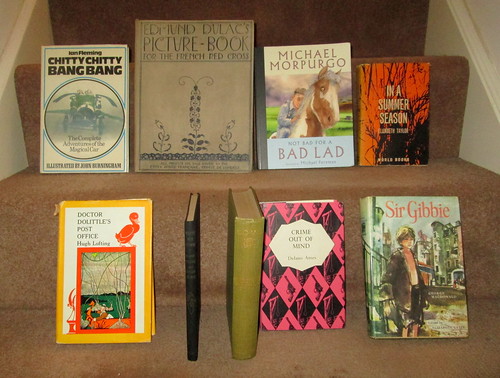
At Mrs Lippincote’s by Elizabeth Taylor was first published in 1945 but my copy is a Virago reprint. This was her first novel, I’ve read almost all of her other novels and I think that this one is obviously not quite as polished as some of her later books. To begin with I wasn’t really too enthralled with this one because I didn’t really like any of the characters but I ended up really enjoying it.
The setting is World War 2 and Julia’s husband Roddy is in the RAF. He has been posted away from London and Julia and their son Oliver have gone with him. They’ve rented an old house and Roddy’s unmarried cousin Eleanor is also part of the household, she’s teaching in a local school.
To begin with Julia is portrayed as a rather annoying and quite rude woman. Eleanor has always been in love with Roddy, so she thinks that Julia is off-hand with her husband, and to be honest she isn’t going to win any ‘best wife’ contest. Worse than that though is Julia’s attitude to seven year old Oliver who hasn’t even started school yet, Julia’s terribly over-protective of him, and it does him no good.
By the time the reader gets towards the end of the book though everything falls into place, and what had seemed like peculiar behaviour on the part of some of the characters becomes completely understandable.
There’s a painful conversation between Julia and her husband who basically thinks that education is wasted on females – and you just know that this is something that Elizabeth Taylor had witnessed herself, indeed I even witnessed that attitude within my own family in the 1960s. How times have changed for the better!
The Virago copy of this book has an interesting article by Elizabeth Taylor which had first been published in the New York Herald Tribune in 1953. It’s a two and a half page snapshot of her life – from her birth in 1912. At the end of it she says: “I think I have no hobbies. In my spare time I like to look at pictures, to write letters to my friends, or just to reflect on the English climate – a subject which is endlessly fascinating and elusive, of which one is unconscious. I do not know where English literature – or the lovely English landscape – would be without this weather.”
Now I just have three of her novels still to read – The Wedding Group, Blaming and The Sleeping Beauty.









